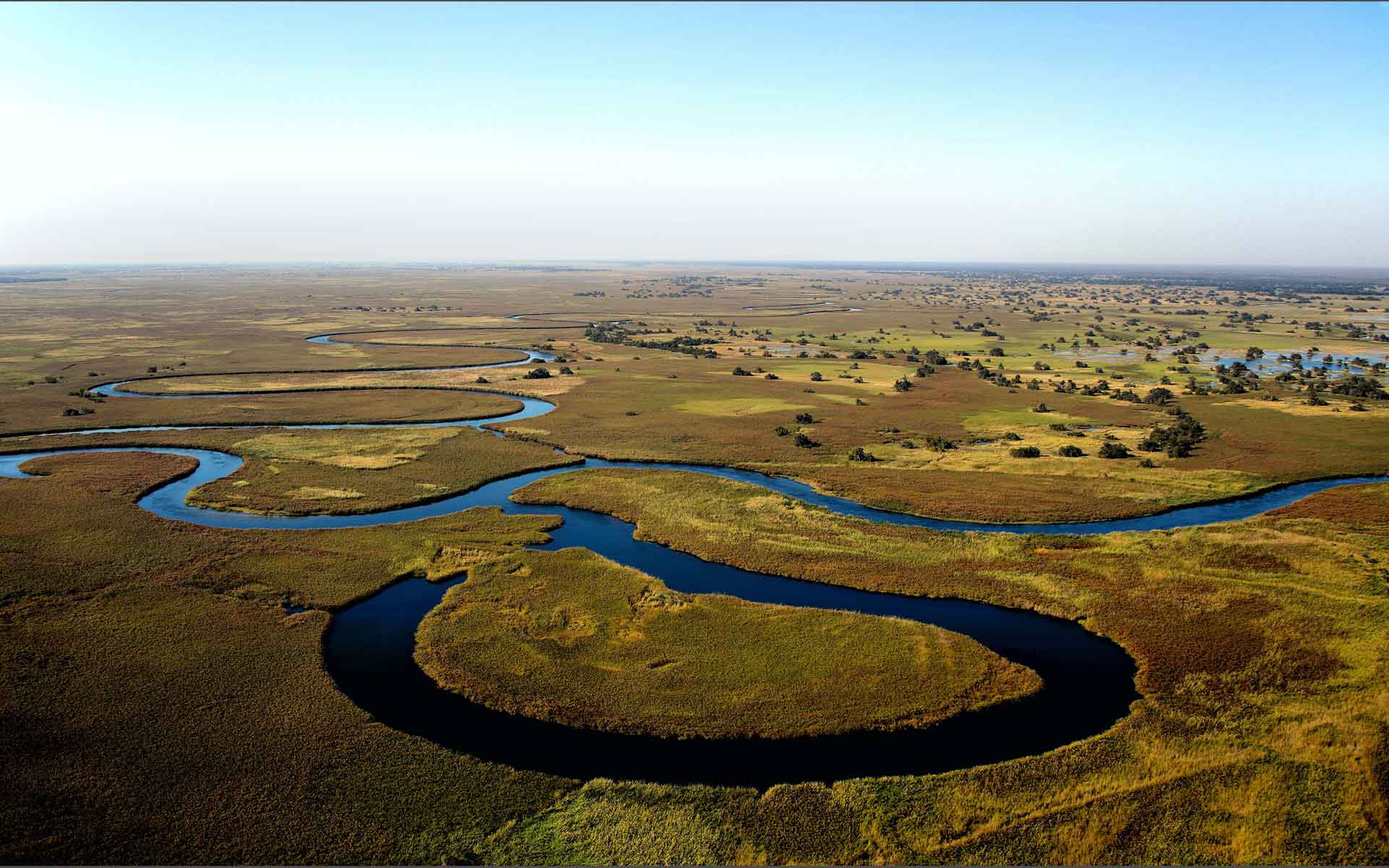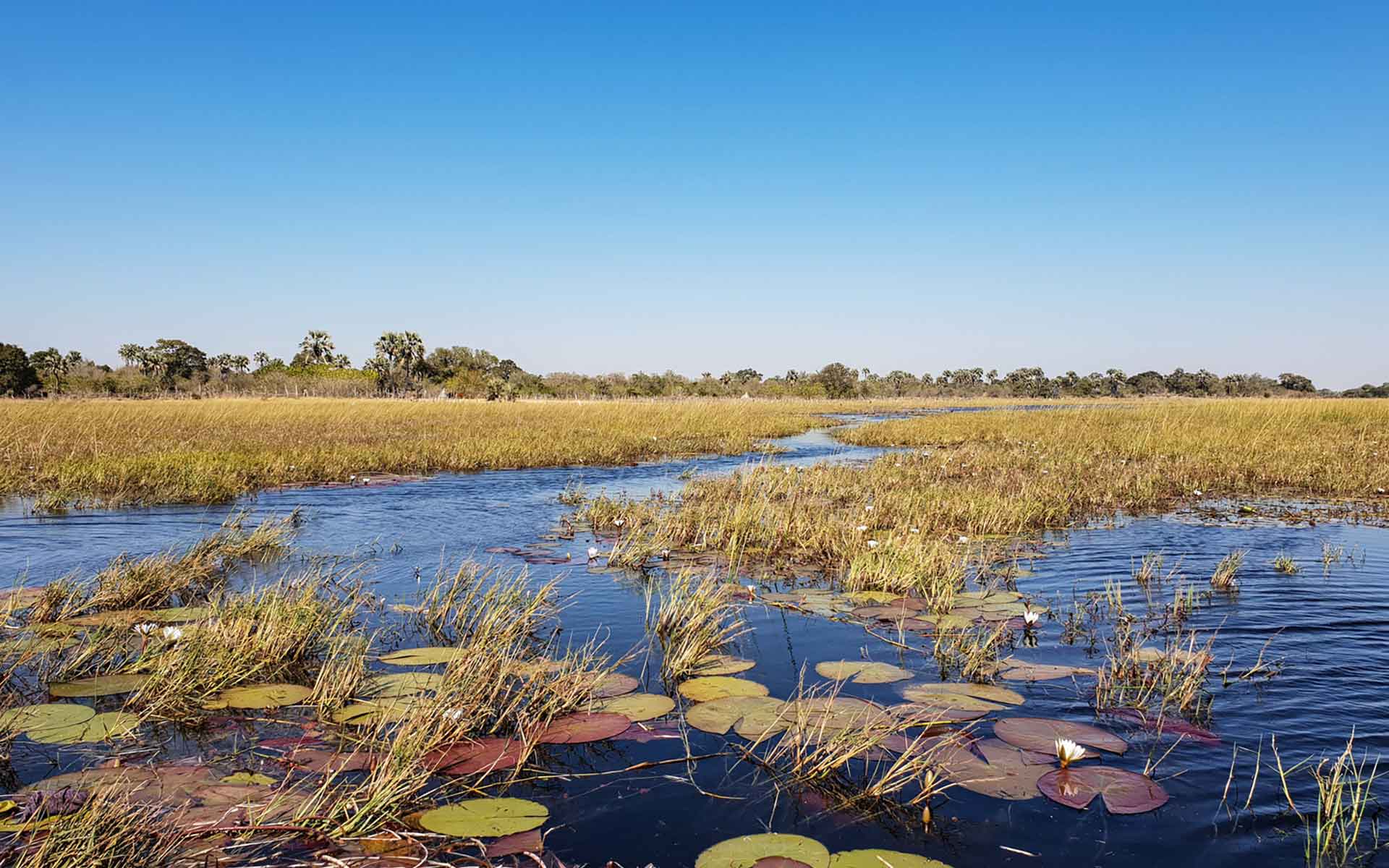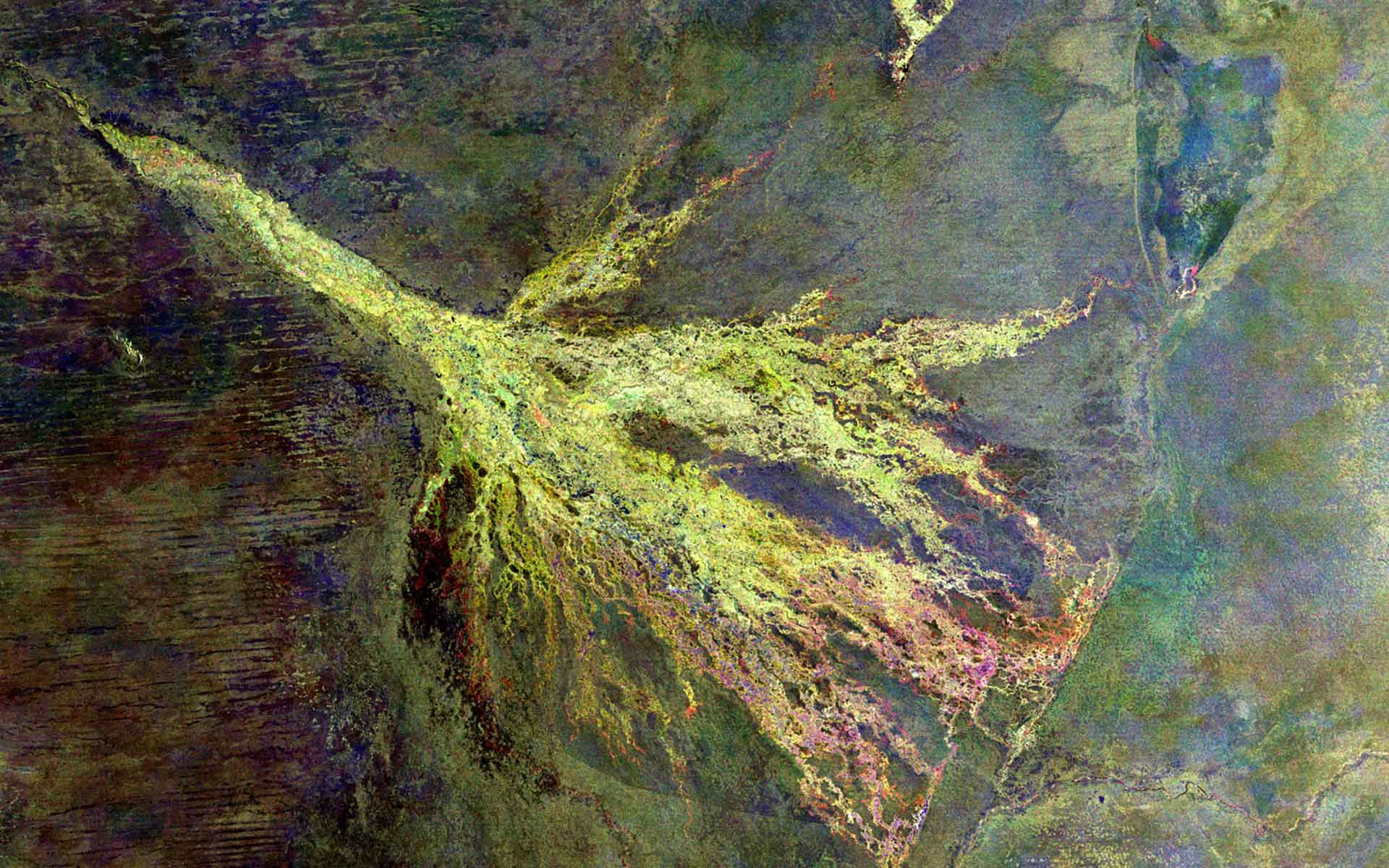
Aerial view of the Okavango delta. (Photo: Wynand Uys / Unsplash).
Geological Period
Miocene – Quaternary
Main geological interest
Geomorphology and active geological processes
Stratigraphy and sedimentology
Location
Okavango, Northwest, Botswana, UNESCO World Heritage Site.
19°17’00.0″S, 22°54’00.0″E
Aerial view of the Okavango delta. (Photo: Wynand Uys / Unsplash).
AFRICA’S LARGEST INLAND ALLUVIAL FAN AND AN EXCEPTIONAL EXAMPLE OF THE INTERACTION BETWEEN CLIMATIC, HYDROLOGICAL AND BIOLOGICAL PROCESSES.
Okavango Delta has been registered as a World Heritage Site by UNESCO in 2014 for its exceptionally intact wetland system and its rich and diverse biodiversity. However, the delta is mainly a geological phenomenon, and it should be recognized as an important geological feature. The climatic-hydrological system is a unique feature. The annual flood cycle which happens during the dry season in Botswana is critial to revitalization of the wetlands ecosystem. The Okavango Delta is a vast wetland system with spectacular scenery and rich biodiversity, which includes the largest elephant population in Africa and serves as a core refuge of Africa’s mega-fauna. The Okavango Delta provides vital ecosystem services and is an important source of fresh water in a largely arid region.
- Geological description
The Okavango Delta, situated in northern Botswana, is a large alluvial fan (40,000 km2 ) lying within grabens of the southern extension of the East African Rift system (Scholtz, 1975). The Okavango Delta is situated within two major grabens, one containing the Panhandle and the other the Delta itself (McCarthy et al., 1998). The delta is located at the terminus of the Okavango River and is a terminal depository for the Okavango River system, which drains central Angola (McCarthy and Metcalfe, 1990; McCarthy, 2013). Topographic gradients on the fan are low, and at the fan the Okavango River forms a system of anastomosing channels flanked by perennial and seasonal swamps (McCarthy and Metcalfe, 1990). The river discharges about 10 km3 of water onto the fan each year, augmented by about 6 km3 of rainfall, which sustains about 2500 km2 of permanent wetland and up to 8000 km2 of seasonal wetland (McCarthy, 2006). The Okavango is a large low gradient Inland delta and is Africa’s largest endorheic delta and the third biggest alluvial fan in Arica. It is largely untransformed wetland system, with uniquely adapted biota timed with the arrival of flood water in the dry, winter season of Botswana (World Heritage Nomination Dossier, 2013).
- Scientific research and tradition
The Okavango Delta has been a subject of fascination since the 1920s. Serious scientific research on its geology and hydrology has been conducted since the 1980s, as can be evidenced by the rich scientific literature about the Delta.
- Reference
McCarthy, T.S. (2006) ‘Groundwater in the wetlands of the Okavango Delta, Botswana, and its contribution to the structure and function of the ecosystem’, Journal of Hydrology, 320(3), pp. 264–282. Available at: https://doi.org/10.1016/j.jhydrol.2005.07.045.
McCarthy, T.S. (2013) ‘The Okavango Delta and its place in the geomorphological evolution of Southern Africa’, South African Journal of Geology, 116(1), pp. 1–54. Available at: https://doi.org/10.2113/gssajg.116.1.1.
McCarthy, T.S., Bloem, A. and Larkin, P.A. (1998) ‘Observations on the hydrology and geohydrology of the Okavango Delta’, South African Journal of Geology, 101(2), pp. 101–117.
McCarthy, T.S. and Metcalfe, J. (1990) ‘Chemical sedimentation in the semi-arid environment of the Okavango Delta, Botswana’, Chemical Geology, 89(1), pp. 157–178. Available at: https://doi.org/10.1016/0009-2541(90)90065-F.
Scholz, C.H. (1975) Seismicity, Tectonics and Seismic Hazard of the Okavango Delta, Botswana. Final Report to the United Nations Development Programme on the Okavango Delta, Food and Agricultural Organization of UN, and Geological Survey and Mines Department, Botswana. UNDP/FAO BOT/71/506. Lamont-Doherty Geological Observatory of Columbia University, Palisades, New York.
- Author(s)
Botswana International University of Science and Technology, Palapye, Botswana

